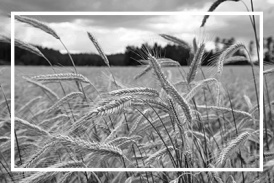Understanding the Marketing Funnel: Localized Strategy for Regional Business Growth
Local businesses, particularly those operating in tight-knit communities, face a different set of dynamics than national brands. The marketing funnel, when tailored to regional patterns and cultural context, becomes a far more effective tool.
“Most funnels don’t break because of a bad product or weak message,” said Brett Thomas, founder of Jambalaya Marketing in New Orleans. “They break because they weren’t built for the audience they’re trying to serve. Around here, relationships drive results. If a funnel doesn’t account for that, it leaks.”
Jambalaya Marketing, a Louisiana-based agency focused on full-service advertising—including web, billboard, broadcast, and digital solutions—approaches funnel building with local insight at the core. According to Thomas, understanding the psychology of local buyers is critical to making each stage of the funnel meaningful.
Top of Funnel (TOFU): Awareness in the Bayou
The top of the funnel is about generating awareness—getting in front of people who don’t yet know a brand or its offerings. In South Louisiana, brand exposure often begins through community involvement, regional radio, local social media engagement, and good old-fashioned visibility.
Billboards on I-10, sponsorships at crawfish boils, or Facebook videos shot in local dialects have a different kind of resonance. The message isn’t just reaching people—it’s speaking their language.
Top-of-funnel marketing here isn’t about slick production or national trends. It’s about recognition. Familiar accents, neighborhood landmarks, and cultural references grab attention more effectively than generic ads ever could.
Middle of Funnel (MOFU): Building Trust with Context
Once awareness is established, the next step is nurturing interest and engagement. This stage often includes lead magnets, social media interaction, email follow-up, retargeting ads, and web content.
In a market like South Louisiana, credibility is earned not just through digital presence but through relational consistency. Online reviews, word-of-mouth recommendations, and responsiveness are critical at this level. If someone sees an ad on the way to church, hears a friend mention the brand at dinner, and then sees the same business answering comments on Facebook, it builds relational trust.
This stage also involves educating the audience—explaining services, sharing case studies, and addressing common concerns. A marketing funnel adapted to the local market does this with authenticity. Cookie-cutter blogs or national ad scripts often fall flat when dealing with an audience that values storytelling, character, and connection.
Bottom of Funnel (BOFU): Action, Conversion, and Follow-Through
At the bottom of the funnel, potential customers are ready to make a decision. The job of the funnel at this point is to eliminate hesitation. Locally, this might mean showcasing real testimonials from known community members, offering a free consultation with someone on staff who’s recognizable, or making the call-to-action feel less transactional and more personal.
Website design, appointment setting tools, pricing transparency, and localized landing pages all matter. But more than that, people want to know they’re not being hustled. They want to work with businesses that show up when they say they will, answer the phone, and remember their name.
In South Louisiana, the final sale is often made after the digital process has done its job. The funnel narrows to a phone call, a handshake, or a casual walk-in visit. If that experience aligns with the tone and promise of the earlier messaging, the conversion is complete.
Post-Funnel: The Local Feedback Loop
The marketing funnel doesn’t end when the sale closes. In a region where reputation spreads fast, the post-sale experience is just as important as the pre-sale engagement.
The feedback loop includes follow-up emails, requests for Google or Facebook reviews, and invitations to refer friends or family. A satisfied customer in Baton Rouge or Slidell can become the next top-of-funnel trigger simply by talking about their experience.
A localized funnel strategy must account for this. Encouraging review generation, community-based referral incentives, and regular follow-up help turn customers into advocates—one of the most powerful top-of-funnel tools in a region driven by word of mouth.
Conclusion
The marketing funnel remains a foundational concept in advertising, but its strength lies in its adaptability. In New Orleans and across South Louisiana, the funnel must reflect the region’s culture, behavior, and sense of identity. Awareness can begin with a parade float sponsorship. Consideration can be nurtured through a neighbor’s endorsement. Conversion might take place in a driveway conversation, long after the Facebook ad was clicked.
Understanding this rhythm is not about trend-following. It’s about respecting how real people make real decisions in real communities.
Morgan Thomas
Rhino Digital, LLC
+1 504-875-5036
email us here
Visit us on social media:
Facebook
Legal Disclaimer:
EIN Presswire provides this news content "as is" without warranty of any kind. We do not accept any responsibility or liability for the accuracy, content, images, videos, licenses, completeness, legality, or reliability of the information contained in this article. If you have any complaints or copyright issues related to this article, kindly contact the author above.
MMI Inc Kitchen and Home Announces Strategic Expansion in Home Remodeling & Renovation
American Manufacturing Association and Frameworks Consortium Announce Premier Texas Manufacturing Conference & Retreat
Redefining Recovery: Daniel Regan’s Healing Us Model Emerges as a Gold Standard for Community Transformation
Więcej ważnych informacji
 Jedynka Newserii
Jedynka Newserii

 Jedynka Newserii
Jedynka Newserii

Handel

Mercosur to tylko wierzchołek góry lodowej. UE ma ponad 40 umów handlowych, które mogą destabilizować rynek rolny
Umowa handlowa między UE a krajami Mercosur może znacząco zaburzyć konkurencję na rynku rolnym i osłabić pozycję unijnych, w tym polskich, producentów – ostrzegają rolnicy i producenci żywności. Umowie sprzeciwia się część krajów unijnych, które domagają się klauzuli ochronnych oraz limitów importowych. – Problemem jest jednak nie tylko ta konkretna umowa. Chodzi o cały system wolnego handlu, który się kumuluje z dziesiątek innych porozumień – podkreśla Andrzej Gantner, wiceprezes Polskiej Federacji Producentów Żywności.
Firma
Dzięki zdalnej weryfikacji tożsamości z wykorzystaniem AI firmy zminimalizowały liczbę oszustw. Rozwiązania wykorzystuje głównie sektor finansowy

Z najnowszych danych Eurostatu wynika, że w 2024 roku 5,9 proc. polskich firm korzystało z rozwiązań z zakresu sztucznej inteligencji. W 2023 roku był to odsetek na poziomie 3,67 proc. Wciąż jednak jest to wynik poniżej średniej unijnej, która wyniosła 13,48 proc. Jednym z obszarów, który cieszy się coraz większym zainteresowaniem wśród przedsiębiorców, jest weryfikacja tożsamości przez AI, zwłaszcza w takich branżach jak bankowość, ubezpieczenia czy turystyka. Jej zastosowanie ma na celu głównie przeciwdziałać oszustwom i spełniać wymogi regulacyjne.
Prawo
Daniel Obajtek: Własne wydobycie i operacyjne magazyny to filary bezpieczeństwa. Zgoda na magazyny gazu poza krajem to rezygnacja z suwerenności energetycznej

Były prezes Orlenu ostrzega przed zmianami w ustawie o zapasach ropy naftowej, produktów naftowych i gazu ziemnego. Jego zdaniem przygotowana przez rząd nowelizacja tzw. ustawy magazynowej i ujednolicanie unijnej polityki energetycznej to zagrożenie dla bezpieczeństwa energetycznego Polski. W jego opinii tylko silna spółka narodowa, własne wydobycie, krajowe magazyny i zbilansowany miks energetyczny zapewnią Polsce bezpieczeństwo i konkurencyjność.
Partner serwisu
Szkolenia

Akademia Newserii
Akademia Newserii to projekt, w ramach którego najlepsi polscy dziennikarze biznesowi, giełdowi oraz lifestylowi, a także szkoleniowcy z wieloletnim doświadczeniem dzielą się swoją wiedzą nt. pracy z mediami.






![Nestlé w Polsce podsumowuje wpływ na krajową gospodarkę. Firma wygenerowała 0,6 proc. polskiego PKB [DEPESZA]](https://www.newseria.pl/files/1097841585/fabryka-nesquik_1,w_85,r_png,_small.png)



.gif)

 |
| |
| |
|